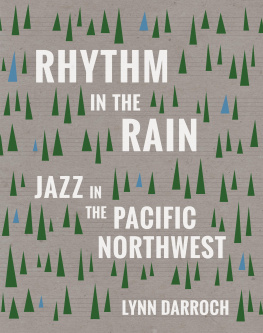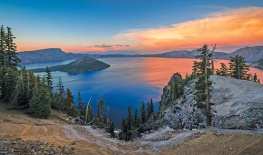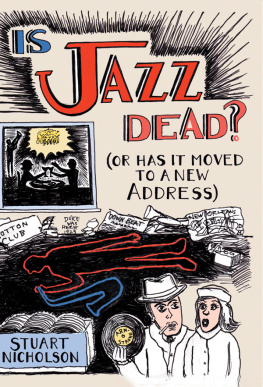Introduction
We Live Here
Every day I can see the mountainsSt. Helens, Rainier, Hood, Adamsand I want to climb. A lot of what makes a great climber is the same as what makes a great improviser: courage, strength, creativity, total awareness of environment, the ability to focus pin-pointedly and generally at the same timeand finally, to let go of all ambitions, inhibitions, thoughts and play.
Alan Jones
Esperanza Spalding didnt want to waste any time after her surprise win for Best New Artist at the 2011 Grammy Awards. Shed grown up hard in Portland and knew how unlikely the award was for a young black woman playing jazz. So she was in a hurry to put her fame to useand knew exactly what she wanted to do: Help the pillars of my jazz community gain the recognition they deserve.
It only took two years.
At the 2013 Awards ceremony, Spalding shared another Grammythis time for Best Instrumental Arrangement Accompanying Vocalist(s)with Thara Memory, her Portland mentor, for his arrangement of her song City of Roses. From her multi-award-winning album Radio Music Society , the hometown tribute also featured students from Memorys American Music Program.
If a single moment can capture the story of jazz in the Pacific Northwest, this might be it.
At the podium to receive the award, Memory leaned on his former students arm. He was sixty-five and had lost a foot and parts of two fingers to diabetes. The Grammy was the culmination of a path hed been on since age twelve, when he fell in love with the music of Miles Davis and started hanging around backstage whenever the leading man of jazz played nearby.
One day, Davis approached.
Youre that trumpet player, arent you? His voice was challenging. I bet you cant play worth a shit.
Memory was stunned but quickly took heartthe man had sought him out, recognized him. His reply became a vow that determined the course of his life.
Well, no, not compared to you I cant, he said. But I can hold down my own thing; I can hold down my own thing and bring some people up with me.
He did, and there he was, fifty years later: an underdog African American musician and teacher, originally from the South, accepting a Grammy Award with a former student who shared her success with the folks back home.
Its a heartwarming image. And it does represent the way musicians work together here, an alternative to the star system that supported the likes of Miles Davis. It also reflects the wider culture of the regiona culture distant from centers of power and influence and as distinct from them as the landscape that shaped it.
Many other images could capture the scene just as well: an afternoon in 1959, when Bobby Bradford and Cleve Williams waited outside Washington High School to make sure teenage drummer Mel Brown got to a rehearsal of the Walter Bridges Big Band. Or young drummer DVonne Lewis playing a tribute concert in 2013 for his grandfather, Seattle organist Dave Lewis. Or the 2013 debut of Darrell Grants The Territory , a jazz suite that depicts the region and its history in sound. Like many musicians from this region, Grant feels a deep connection to the jazz that came before him heremusic that embodied an approach shaped in part by its distance from the mainstream.
Not everyone finds that distance useful to the scope of their ambitions, including jazz artists who, like Spalding, have left to become international stars: Bing Crosby and Mildred Bailey decamped before a full-fledged jazz scene developed in the region; Quincy Jones always had his sights set on leaving. They were followed by Larry Coryell in the late 1960s, Chris Botti in the 1980s, and Aaron Parks in the 1990s. But growing up in the Pacific Northwest did shape the musicians they became. As it did Ray Charles, who got his start in Seattle, where Jimi Hendrix grew up and learned to play the blues and Kenny G the saxophone. But its not big names that define jazz in the Pacific Northwest. Quite the opposite.
What has developed here was shaped by and reflects the environment, the economy, and a jazz community that grew up in a kind of isolation often found out West, where artists are aware of movements elsewhere but not always in step with them. This is no place to gain fame and fortune playing jazz. Its rare for artists who remain in the Pacific Northwest to establish a national reputation without first attaining it elsewhere.
Some of the established players who relocated to the Pacific Northwest did so because they value the very qualities that have given the local jazz community its identity. Thats the key: the values shared by artists who choose the Pacific Northwest, whether native-born or immigrant, determine the character of the regions jazz scene, whether the style is gypsy swing or avant-garde, chamber, funk or straight-ahead. The region some call Cascadia, that rainy country from the Southern Willamette Valley to Bellingham Bay, between the Cascade Mountains and the Pacific, has shaped its music just as the culture and landscape of Southern California or the Mississippi Delta influenced music made there.
This book tells the story of that happy wedding of people and place.
Terroir: The Territory Shapes the Artist
Darrell Grant, On the Territory blog, June 19, 2013
In wine they have a concept called terroirthat mix of dirt, rain, sun, wind, and water that makes one vineyards grapes taste different from anothers.
It is possible the territory shapes its artists, too. Seeps into our tunes and our dreams, inspires us, connects uswhether we are native or transplant. It runs deeper than genre or musical style. When you love a place, its story cant help but make its way into your own, and you can feel its current in the work.
Part of it is Geography. It is the land, the rocks, the rivers. In the Cascade watershed the interface of land and water defines us. The verdant, fertile soil laid down over millennia, the great river Columbia that is the lifeline of our region. The peaksHood, Adams, Saint Helens, Rainer, and the othersstand as spiritual monuments grounding us and fueling our imaginations.
The Territory is ground, water, sky, and everything in between. It is what was here before you came and what will be here after you are gone. It is the bones, the sweat, the blood, the dreams, the blessings, the harvests, the floods, the tears, the rocks, the roots, the broken branches, fallen leaves, and forgotten paths. It is the songs of bug, bird, blizzard, wagon wheel, salmon, elk, beaver, and berry. It is the bank of the creek, the bed of the river, the stump in the ground, and the memories of the elders. The territory is the whole storytold and untold.
Its a tale of port cities on the Pacific Rim and kids from the hinterlands drawn to them, where small African American and Asian communities found a crucial niche and native culture filtered in almost unnoticed. It chronicles the impact of economic boom and bust and the powerful influence of the landscape. Most of all, its the story of the artists themselves, and the remarkably supportive communities they created.
Maybe its something in the water. Or just all the water everywhere here in Cascadiathe land of falling waters.
I wouldnt live anywhere else in the world, says bassist Phil Baker, who toured with Diana Ross early in his career and is a longtime member of the pop-jazz band Pink Martini. No place better than Portland in all respects. Its a user-friendly size, but not too small to have a lot of cultural activities and a deep bench for every instrument.
Nobodys getting rich here, he adds, but theres really a sense of community and camaraderie.






